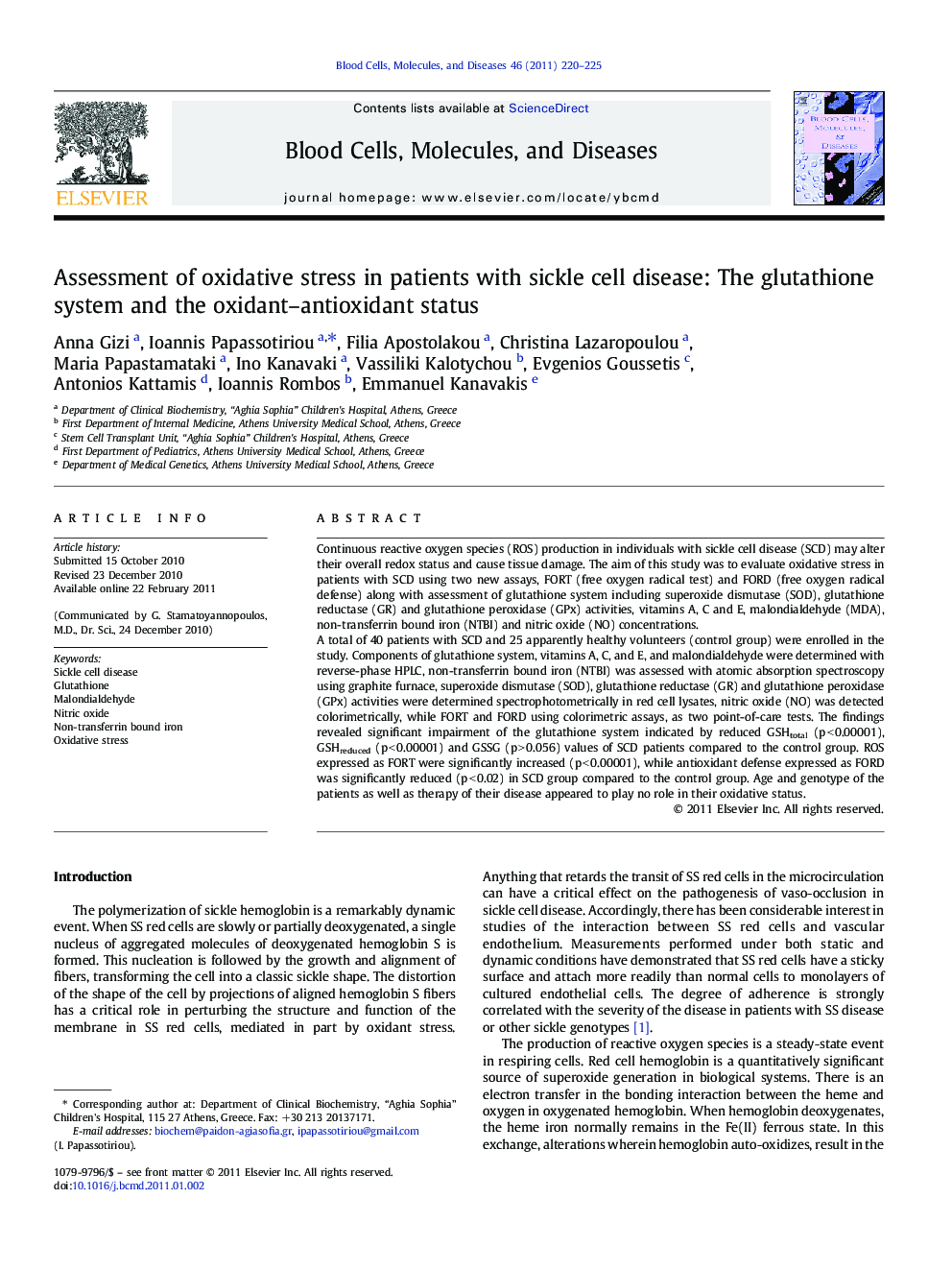| Article ID | Journal | Published Year | Pages | File Type |
|---|---|---|---|---|
| 5913570 | Blood Cells, Molecules, and Diseases | 2011 | 6 Pages |
Abstract
A total of 40 patients with SCD and 25 apparently healthy volunteers (control group) were enrolled in the study. Components of glutathione system, vitamins A, C, and E, and malondialdehyde were determined with reverse-phase HPLC, non-transferrin bound iron (NTBI) was assessed with atomic absorption spectroscopy using graphite furnace, superoxide dismutase (SOD), glutathione reductase (GR) and glutathione peroxidase (GPx) activities were determined spectrophotometrically in red cell lysates, nitric oxide (NO) was detected colorimetrically, while FORT and FORD using colorimetric assays, as two point-of-care tests. The findings revealed significant impairment of the glutathione system indicated by reduced GSHtotal (p < 0.00001), GSHreduced (p < 0.00001) and GSSG (p > 0.056) values of SCD patients compared to the control group. ROS expressed as FORT were significantly increased (p < 0.00001), while antioxidant defense expressed as FORD was significantly reduced (p < 0.02) in SCD group compared to the control group. Age and genotype of the patients as well as therapy of their disease appeared to play no role in their oxidative status.
Keywords
Related Topics
Life Sciences
Biochemistry, Genetics and Molecular Biology
Molecular Biology
Authors
Anna Gizi, Ioannis Papassotiriou, Filia Apostolakou, Christina Lazaropoulou, Maria Papastamataki, Ino Kanavaki, Vassiliki Kalotychou, Evgenios Goussetis, Antonios Kattamis, Ioannis Rombos, Emmanuel Kanavakis,
